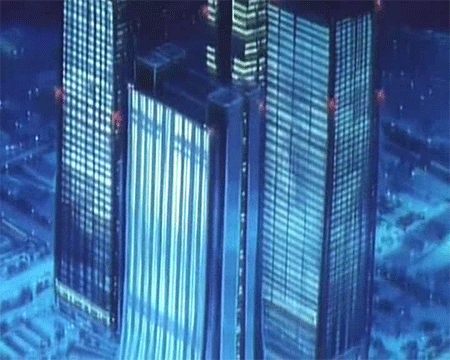
A new gallery for video art, Vidéoclubparis offers a single, hybrid space with two parallel modes of screening. The first is a monthly, online exhibition of a dozen young artists, centered around a variety of themes (from ‘soundtrack’ to ‘bathing suit’, among many others); presented with basic information about the pieces and their creators. The second part is a live screening-event organized for each opening, in unlikely, semi-private places ranging from a sauna to a Bollywood video store. By seeking out unique locations for screenings, the event challenges the idea of the formal white cube - an aspect that is emphasized by the parallel screenings on the web. “The aim is to create bipolar screenings, we’re trying to do the high jump between watching videos online and taking people to a place completely unexpected,” said Stéphanie Cottin, co-founder of the organization, “the two work well together, because the extravagance of the events balances out the conventionalism of the online curation.”
Vidéoclubparis emerged out of Cottin and partner Bernard Guégan’s fascination for video rental machines placed outside video stores all over the capital - holes in the wall, which have been increasingly unpopular since the arrival of the Internet. “We like the idea of a cinema at home, and today, the closest thing is YouTube,” said Guégan, “so we wanted to keep the idea of diffusion of both the stores and the Internet.”
Some artists aren’t keen on showing work online, the pair explained, because of the fantasy of a big screen in a classical gallery. To solve this, and offer a more typical screening while still bi-passing the gallery system, every show leads to a tailor-made projection environment.
“Vincent Ganivet, for example, wanted a ‘real’ gallery and big projector, something clean and more classical. Yet when we offered him to show in a Bollywood store, in a space that also generates images, he liked the idea,” said Cottin. The work Ganivet showed in the store, Feux d’Artifices ("Fireworks") (2008), portrays fireworks lit during the daytime within a natural landscape. This results in the opposite effect of their use in the nighttime: one can barely see the lights and smoke, as they are swallowed up in the clouds and bright sky. Ganivet’s failed explosion was shown amongst a dozen Bollywood films, screened on TV sets all over the shop. Bollywood films often end in grandiose firework displays, and Feux d’Artifices presented an ironic contrast to this common grand finale within the genre.

Another example is a group show entitled "Dérives Urbaines," i.e. Urban drifts. As the title suggests, all the videos deal with the theme of the post-industrial city, in a dystopian tone. This includes Sun City (2005) by Olivier Cazin and Thomas Barbey, a silent travel through a city, constructed entirely from extracts of various Marvel comics (‘a city about to be Blade-Runnerized’, said Cazin about the film), or Rhombus Sectus by Raphaël Zarka (2009), which continuously films, day and night, the same futuristic building.These works were screened in Bernard Guéguan’s bedroom, on a small TV screen, forcing the audience to pile up on the same bed. The alienating feel of these images contrasted with the intimacy of the environment and the physical proximity of the viewers.

Another group show, called "En Maillot de Bain (In A Bathing Suit)" was screened in a sauna built in Mains d’Oeuvres, an art center in the northern Parisian banlieue. In order to enter the wooden room, the audience had to be in full beach attire. There, they watched films about the notion of ‘reduction’ (a comic poke at their sudden sartorial reduction.) Films therefore looked at simple, ‘bare’ gestures detached from a grander context: Tu m' by Pierre Leguillon (2008) consists of two hands simply flicking through art opening invitations, or Point Ligne et Particules by Fayçal Baghriche, (2008) is a one shot film of a man spray-painting a single straight line on a train, without ever showing the finished result.

“Inevitably, every work generates new ideas, new viewing modes and contexts,” said Guégan. Vidéoclubparis’s screenings encourage a recognition of the space outside the monitor, even when detached from an identifiable, formal context. What both viewing modes have in common is their proximity to the real world, Guégan believes: when logging on to Vidéoclub, YouTube, offering videos of a similar format, is just one click away. When screening outdoors, one isn’t sheltered from urban life, but rather, embraces it and takes part in it in a novel manner - such as gathering around a gallery window to look at a film projected through a keyhole. “Our main question is ‘when do you people want to see images and how? As visitors online, at the cinema, with friends?’. We’ll adapt, video by video.” Said Guégan, “But for now, all we have to offer is a database to access the clips, and if you make it to the openings, there might be wine and peanuts.”
Alice Pfeiffer is a Paris-based freelance journalist, who writes for the New York Times, the International Herald Tribune, Art in America, Dazed and Confused, Interview and Tank. After graduating with a Masters degree in Gender Studies from the London School of Economics, she went on to work as an editorial assistant for the International Herald Tribune in Paris. She is now working between her couch in Montmartre and London's East End.

